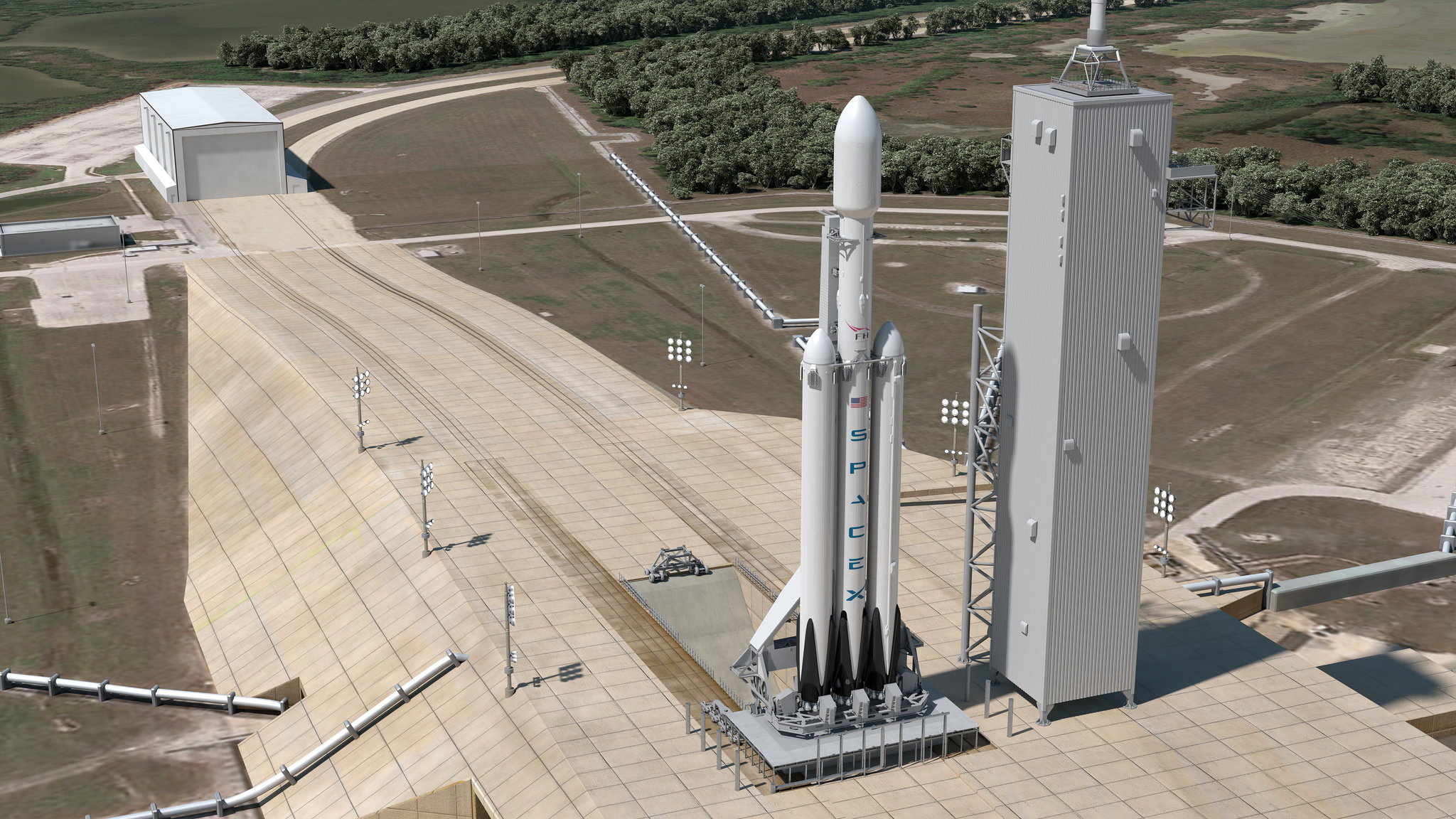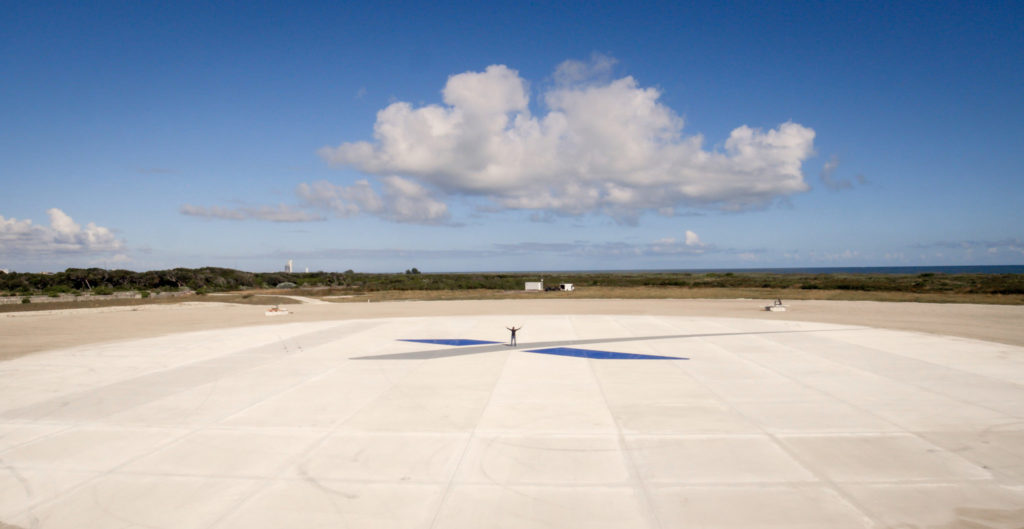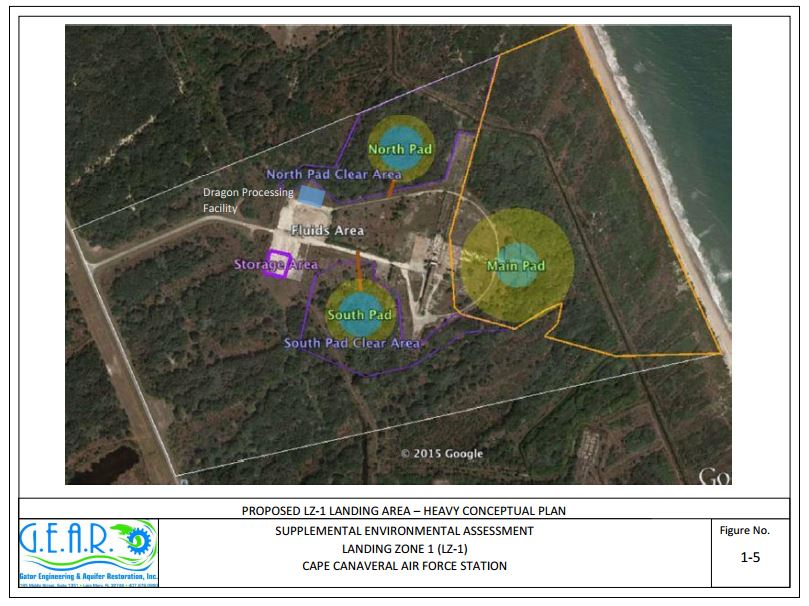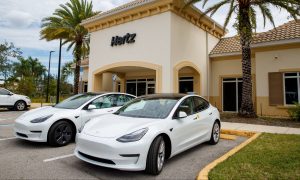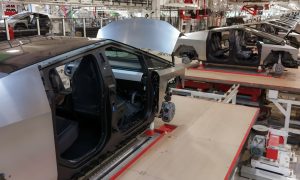A draft environmental impact report by SpaceX and the 45th Space Wing at Patrick Air Force Base, Florida has been recently released for public review on the environmental section of the Patrick AFB website. The report contains details on proposed new rocket landing pads, the expected sonic boom activity from the planned rocket landings, and information about a proposed Dragon capsule processing facility. The report was originally completed in December 2016.
One of the most ambitious goals of SpaceX’s Falcon Heavy rocket is the triple landing of two first stage boosters and center core onto ground. All three parts together comprise twenty-seven Merlin rocket engines and generate 5.13 million pounds of thrust at liftoff. Each of the first stage boosters is equivalent to the first stage of a Falcon 9 rocket, the landings for which have been successful four times out of the give most recent attempts.
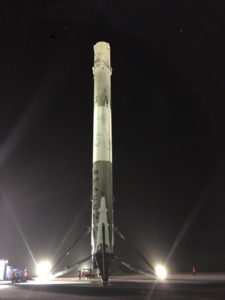
In order to achieve a triple landing with Falcon Heavy from the east coast, SpaceX requires the construction of two new landing pads nearby the existing main pad at Cape Canaveral Air Force Base (CCAFB). According to the environmental report, each new pad will need to be 282 feet in diameter with an additional hard-packed, 50-foot soil “apron” surrounding the pad. The pads will further require a depth of 18 inches in order to withstand the weight and thrust energy of Falcon 9-type landings. All construction activity would take place in the area of CCAFB known as Landing Zone 1/Launch Complex 13.
In the report, SpaceX estimates six possible Falcon Heavy launches per year once development and construction are complete in addition to the previously estimated twelve Falcon 9 launches. A proposal to additionally utilize the landing zone area for a Dragon capsule processing facility is also part of the report which would measure approximately 100 x 130 x 30 feet in size.
The addition of the new landing pads would expand SpaceX’s booster recovery options; however, the company may still utilize autonomous droneships for landing purposes subsequently with the new pads. Even with the droneship option, the report further asserts that without the additional landing pads, reusability of the boosters would suffer due to recovery options only including an ocean splashdown for at least one stage of a Falcon Heavy assembly.
The full report includes complete investigation summaries of the construction and landing impacts on land use, noise, biological resources, historical resources, hazardous materials & waste, climate, and water resources along with other environmental factors.
Of particular interest is the assessment of the sound impacts on local residents. Up to 2 sonic boom events per landing stage could occur over residential areas, totaling 6 sonic booms per Falcon Heavy launch. While the sound levels would fall within mandatory range limitations, the report suggests public awareness efforts in order to “reduce surprise” upon hearing the boom events. The public comments attached as an appendix to the report were highly supportive of SpaceX’s construction proposal and overall mission.
News of the report’s release was originally reported by NASA Spaceflight after it was submitted to a forum following notification by a Patrick AFB official of its publication.

